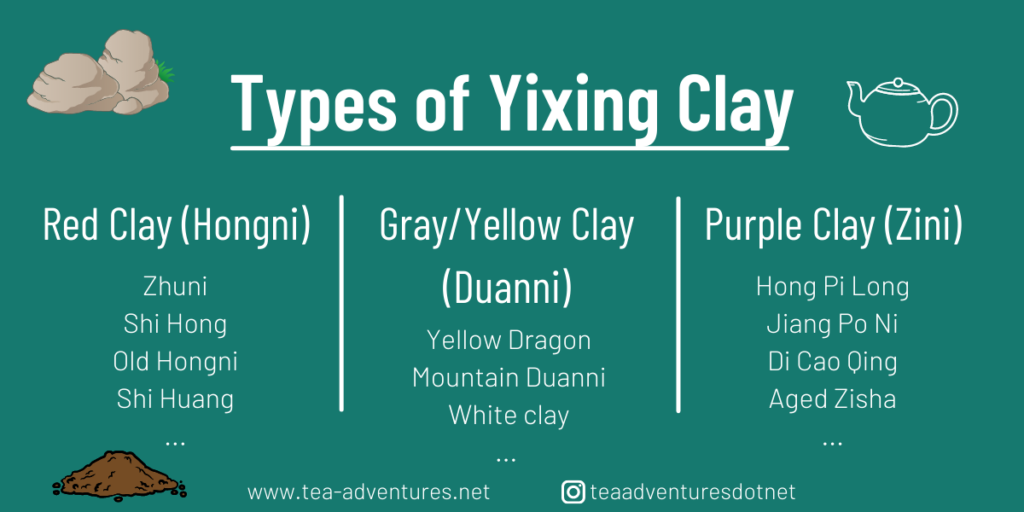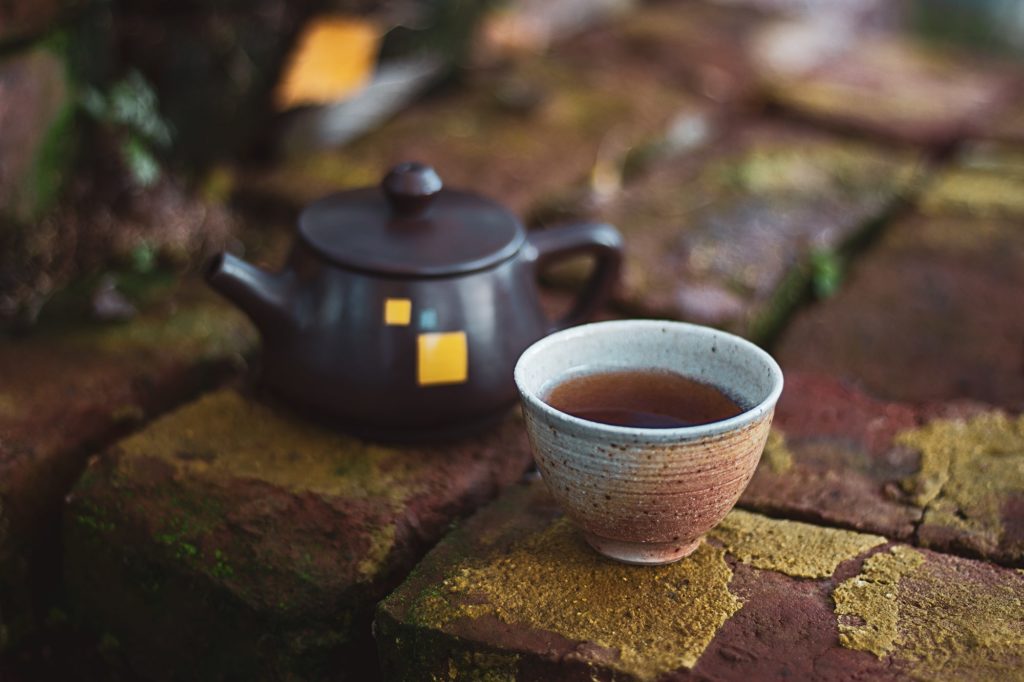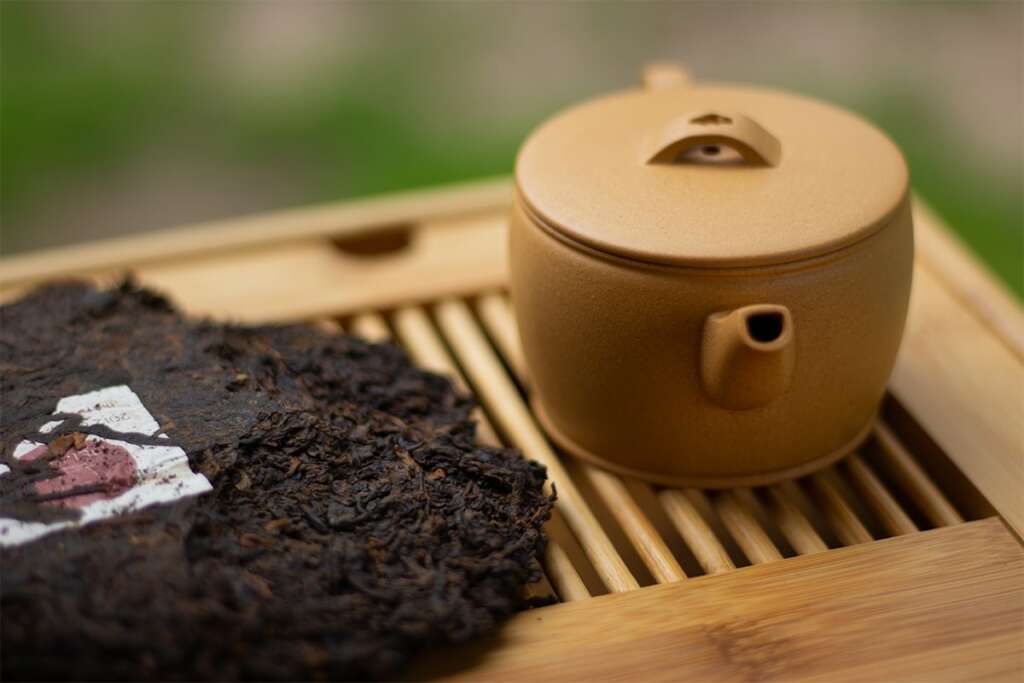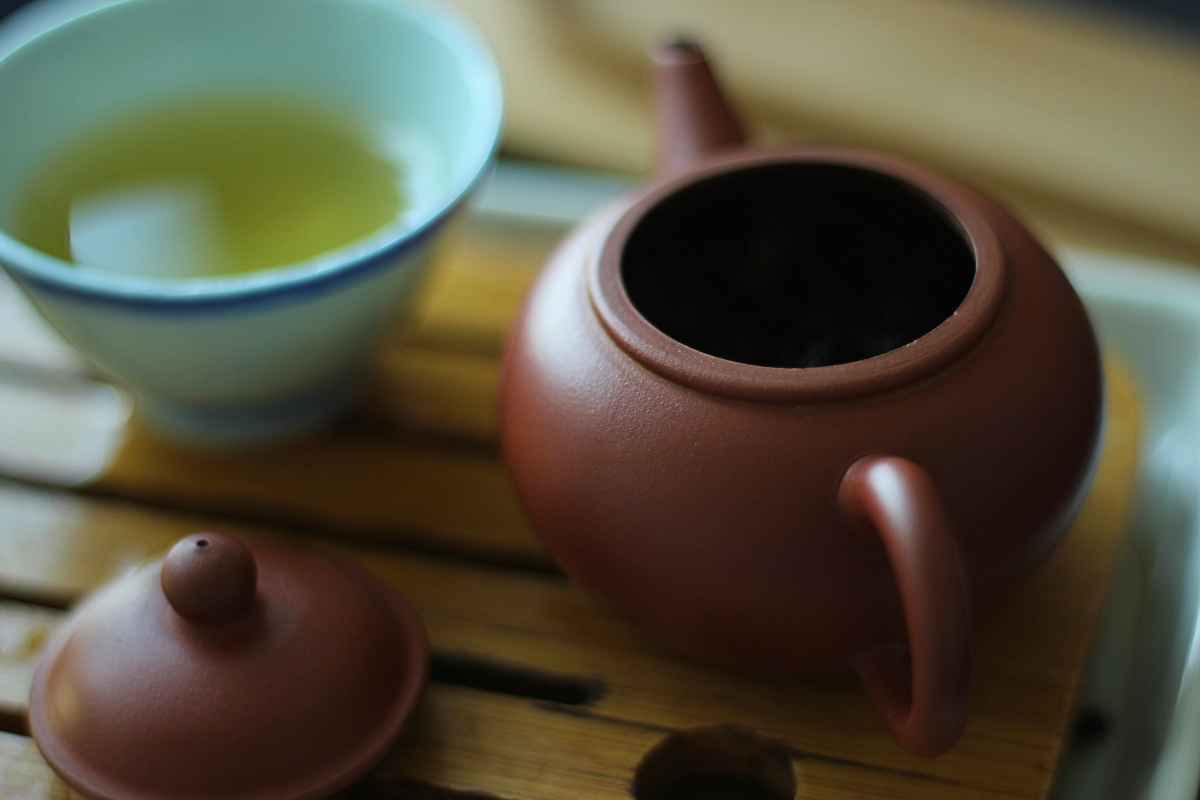I see some people struggling to find the perfect teapot for sheng pu-erh. That is why I thought it would be a good idea to write an article answering the question: “What is the best clay for sheng pu-erh?” This article is a summary of my thoughts on this matter and it’s what I learned after talking to numerous people online, browsing the internet for information, and brewing a lot of pu-erh tea myself.
The best clay for sheng pu-erh depends on several factors. Young sheng pu-erh is best brewed in a red clay (Hongni) teapot. Aged sheng pu-erh (dry storage) can be brewed in a red clay (Hongni) or purple clay (Zini) teapot. Aged sheng pu-erh (wet storage) is best brewed in a purple clay (Zini) or Yellow clay (Duanni) teapot.
Clay teapots for pu-erh tea
Clay teapots have been used to brew pu-erh tea for centuries. Finding the right clay teapot can be a challenge as no two teas are the same and each tea session can only happen once. This was perfectly described by 16th-century tea master Sen no Rikyū. He described it as 一期に一度 (ichigo ni ichido), which means ‘one chance in a lifetime’.

Don’t know where to buy tea online? I made a list of over 300 online tea shops and I keep updating it regularly. You can check it over here
However, we can try our best to get the most out of those precious tea leaves by using the right tools. Clay teapots are known to enhance the tea’s flavor, improve body sensation and Qi and improve the overall experience. The two most commonly used clay teapots for pu-erh tea are Yixing teapots and Jianshui teapots.
Types of Yixing clay
Before we discuss the different options for each subtype of sheng pu-erh, it’s important to know that there are three main types of Zisha or purple sand clay. The name ‘Zisha’ is used as an umbrella term to refer to all types of clay from Yixing, but it’s also used to talk about a specific type of clay; Zini clay.
In addition to Zini, there is Hongni or red clay and Duanni or gray/yellow clay. These are the three main Zisha clays that are available today. Within these clays, there are numerous subtypes of clay.

Clay is not the only factor that is important when choosing a teapot for pu-erh tea. The shape of the teapot, the firing temperature, and the thickness of the walls also have an effect on the tea liquor, but those are complicated topics for another time.
Best clay for sheng pu-erh
In order to choose the right teapot for a particular tea, the clay from which the teapot is made is the most important factor to keep in mind. Which type of clay (Jianshui or any type of Zisha) you should use largely depends on the age of the tea and the storage conditions (if we are talking about aged-sheng).
Young sheng pu-erh
Most people drink young sheng pu-erh for the green, bright and fruity flavors. For that reason, it’s better to choose a clay teapot that doesn’t mute the details and small nuances of the tea. When I’m brewing young sheng, I usually go for a red clay Yixing teapot.
After trying many different clay teapots and asking friends for advice, I always use my gas-fired red clay teapot to get as many details and nuances as I can. I have brewed young sheng in darker Zini clay and it felt like I lost some of the fruitiness I did get when brewing the same tea in a porcelain gaiwan.
My advice for young sheng is to use a Zhuni or Hongni teapot. These two types of clay are red clay and are denser than Zini and Duanni clay. This means that red clay doesn’t absorb as much of the flavors as Zini and Duanni. If you have a delicate tea and you really want to extract everything out of those leaves and get the full experience, red clay is your best option if you want to use a clay teapot. A high-fired red clay teapot is even better as it’s denser and allows for better flavor and aroma extraction.


Another option to brew young sheng pu-erh is a Jianshui teapot. These teapots come from Jianshui county in Yunnan province. Jianshui clay is usually a blend of different clays from the mountains in Jianshui county. Some people prefer Jianshui teapots to brew pu-erh tea because it comes from the same region as pu-erh tea itself: Yunnan.
This implies that these teapots are made from the same soil, weather, and environment. Some people say this works better than Yixing teaware, but it’s personal preference. If you want to extract everything out of the tea leaves, a Jianshui teapot is worth trying.
Aged sheng pu-erh dry storage
Aged sheng pu-erh offers a completely different experience than young sheng, but it’s possible to use the same type of teapot. If you have an aged sheng that went through dry and clean storage, you might want to get every little detail out of those (usually expensive) tea leaves.
If you have a clean and dry-stored aged sheng pu-erh, a red clay teapot might be a good option. However, most people (including myself) prefer using a Zini teapot for aged sheng. Unless you have the best of the best, there will be some storage notes and other unpleasant elements in the tea that you might not want. For this reason, Zini teapots are perfect because they soften the tea’s mouthfeel and make the tea smoother.
There are several types of Zini clay and different blends of these clays, but a Di Cao Qing (底槽青 in Chinese) teapot is a good start as it’s a versatile Zini teapot. It’ll work well with most aged and middle-aged sheng pu-erh. I have one and I use it almost every day because it performs so well. It softens the rougher edges and makes the tea smoother, but it doesn’t overdo it. It’s just right!
Aged sheng pu-erh wet storage
Aged sheng pu-erh that went through wet or traditional storage is a category of sheng pu-erh on its own. For this type of sheng pu-erh, I suggest using a Zini teapot or even a Duanni teapot. Tea that went through wet storage can have harsh (storage) notes that you want to avoid.


Zini mutes some of those harsher notes and makes the tea smoother. Duanni has an even greater effect because this clay is usually more porous than Zini clay. In some cases, Duanni teaware can be too muting so not everyone likes it. My advice is to experiment to see which clay you like best with a specific tea.




